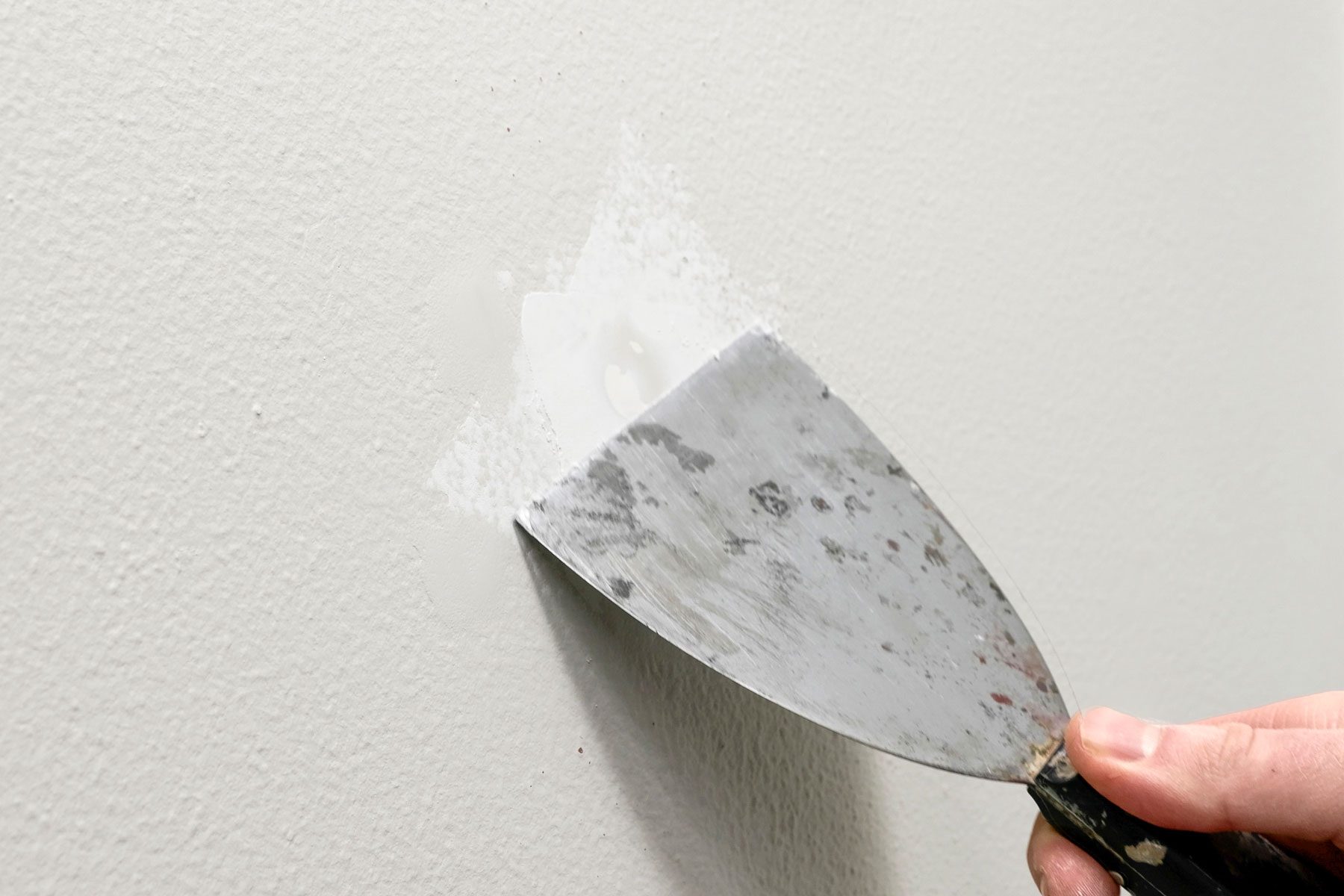How to repair a small hole in drywall in six simple steps.
1 - 2 hours
Beginner
$0 - $20
Introduction
Learn the crucial DIY skill of how to fix a hole in drywall with this beginner-friendly tutorial that delivers professional-looking results.
Tools Required
- Paintbrush
- Putty knife
- work light
Materials Required
- Clean rags
- Fine-grit sanding sponge
- Paint
- Spackle
Project step-by-step (6)
Small holes and cracks in drywall are common in almost every home at some point. They can be quite annoying to look at, but the good news is that fixing them is incredibly easy and quick. You’ll need to pick up some spackle to repair these small holes in your drywall. Several types of spackle are available, including lightweight, all-purpose, heavyweight, and epoxy. A high-quality, lightweight, non-shrinking spackling compound is ideal for filling small holes in drywall and even on plastic trim.
I had a few holes to repair in my drywall, and a helpful tip that many people might not know is to use a work light to illuminate the area. When you shine a light on the drywall, you’ll likely discover more imperfections and holes you didn’t initially notice. You want to avoid having to redo the work later, so addressing everything at once is the best approach. I also recommend waiting until the spackle is completely dry before you begin sanding it. It’s tempting to rush this process, but if you don’t wait, you could ruin the work you’ve just done and end up having to reapply the spackle.
Turn on a work light
When preparing your walls for repair, position a work light to highlight defects in the drywall, making them easier to see and fix.

Sand-off loose peeling drywall
It is common for loose pieces of drywall to stick up from a hole or dent in drywall. Use a fine-grit sanding sponge between 150 and 220 grit or a putty knife to smooth the area where the repair will be made.

Remove drywall dust
After sanding, drywall dust will likely remain on the wall. Remove the drywall dust using a clean, damp shop rag, then dry the surface.

Apply drywall spackle
To repair a small hole in the drywall, use a putty knife to apply a layer of spackle. Press down firmly while spreading the spackle to ensure it fills the hole completely and covers the surface evenly. Allow the spackle to dry for one to five hours, depending on the temperature and the amount of spackle used.
If you are repairing a small hole, a second spackle application is not usually required. If one application is insufficient, apply another layer of spackle and wait for it to dry.

Sand the dried spackle
After the spackle has dried, sand it along with the surrounding drywall using the fine-grit sanding sponge to flush the spackle with the wall.

Paint the drywall
Wipe the wall with a clean, damp rag to remove dust before painting. Skipping this step will prevent the surface from appearing smooth.
Apply two coats of wall paint to the dried spackle, allowing each coat to dry fully before applying the next.

FAQ
What is the best filler for a hole in drywall?
If the hole is small, use a lightweight spackle; use a heavyweight spackle for larger repairs.
Is joint compound or spackle better for fixing holes in drywall?
Joint compound is better for large drywall repairs, while spackle should be used for smaller holes under 1/2-in.
How do you fix tiny holes in drywall?
Apply lightweight spackle to the hole, then wait for it to dry before sanding it down and repainting the repaired area.
How can you prevent holes in your walls?
When hanging pictures on your wall, consider using adhesive hooks or tape. Use a stud finder to locate the studs before drilling to avoid unnecessary holes.
















